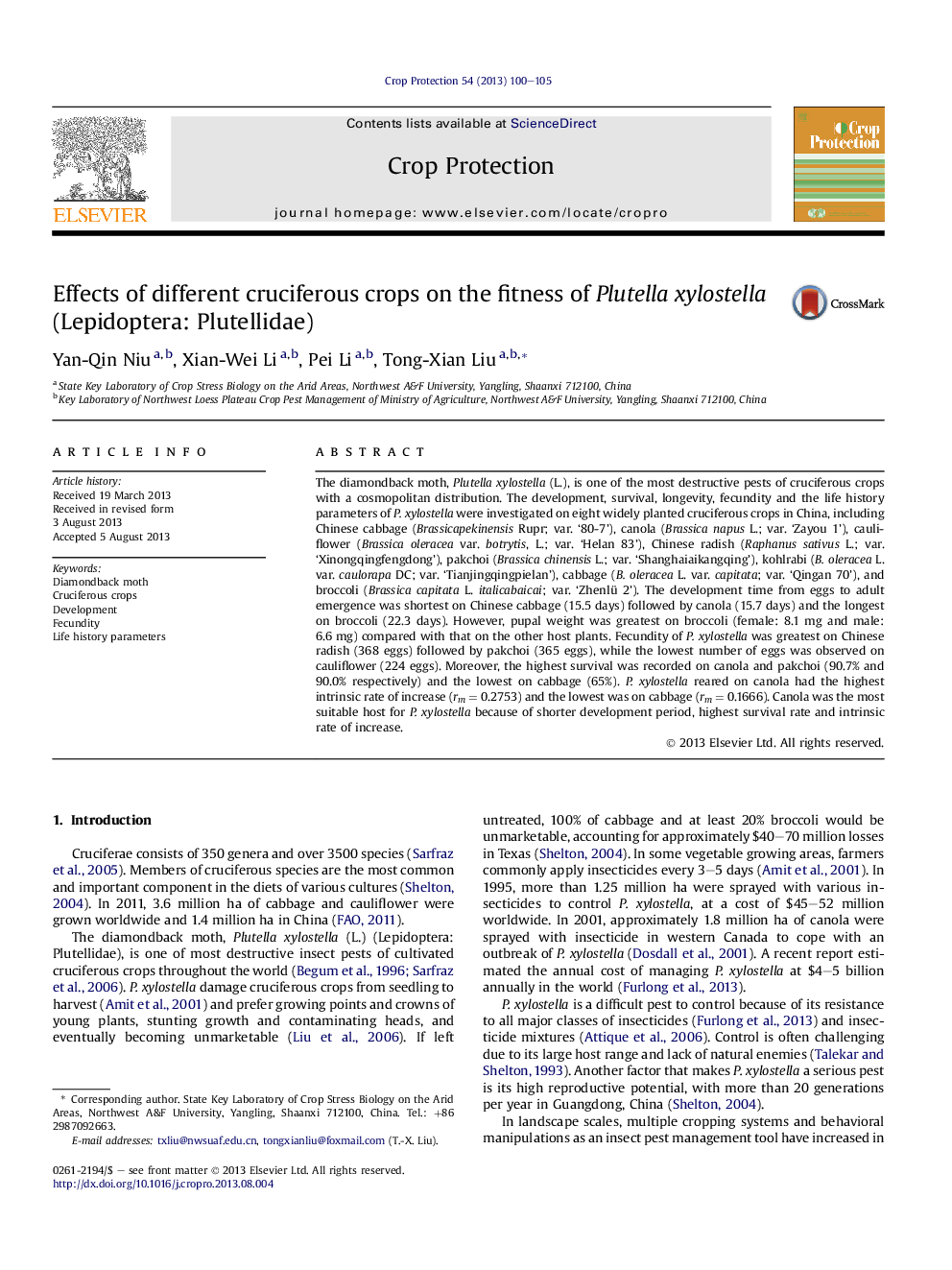| کد مقاله | کد نشریه | سال انتشار | مقاله انگلیسی | نسخه تمام متن |
|---|---|---|---|---|
| 6373800 | 1624333 | 2013 | 6 صفحه PDF | دانلود رایگان |

- We studied the biology of the diamondback moth (DBM) on eight cruciferous vegetables.
- The life history parameters of DBM varied greatly among the vegetables.
- DBM had the highest intrinsic rate of increase on canola and the lowest on cabbage.
The diamondback moth, Plutella xylostella (L.), is one of the most destructive pests of cruciferous crops with a cosmopolitan distribution. The development, survival, longevity, fecundity and the life history parameters of P. xylostella were investigated on eight widely planted cruciferous crops in China, including Chinese cabbage (Brassicapekinensis Rupr; var. '80-7'), canola (Brassica napus L.; var. 'Zayou 1'), cauliflower (Brassica oleracea var. botrytis, L.; var. 'Helan 83'), Chinese radish (Raphanus sativus L.; var. 'Xinongqingfengdong'), pakchoi (Brassica chinensis L.; var. 'Shanghaiaikangqing'), kohlrabi (B. oleracea L. var. caulorapa DC; var. 'Tianjingqingpielan'), cabbage (B. oleracea L. var. capitata; var. 'Qingan 70'), and broccoli (Brassica capitata L. italicabaicai; var. 'Zhenlü 2'). The development time from eggs to adult emergence was shortest on Chinese cabbage (15.5 days) followed by canola (15.7 days) and the longest on broccoli (22.3 days). However, pupal weight was greatest on broccoli (female: 8.1 mg and male: 6.6 mg) compared with that on the other host plants. Fecundity of P. xylostella was greatest on Chinese radish (368 eggs) followed by pakchoi (365 eggs), while the lowest number of eggs was observed on cauliflower (224 eggs). Moreover, the highest survival was recorded on canola and pakchoi (90.7% and 90.0% respectively) and the lowest on cabbage (65%). P. xylostella reared on canola had the highest intrinsic rate of increase (rm = 0.2753) and the lowest was on cabbage (rm = 0.1666). Canola was the most suitable host for P. xylostella because of shorter development period, highest survival rate and intrinsic rate of increase.
Journal: Crop Protection - Volume 54, December 2013, Pages 100-105